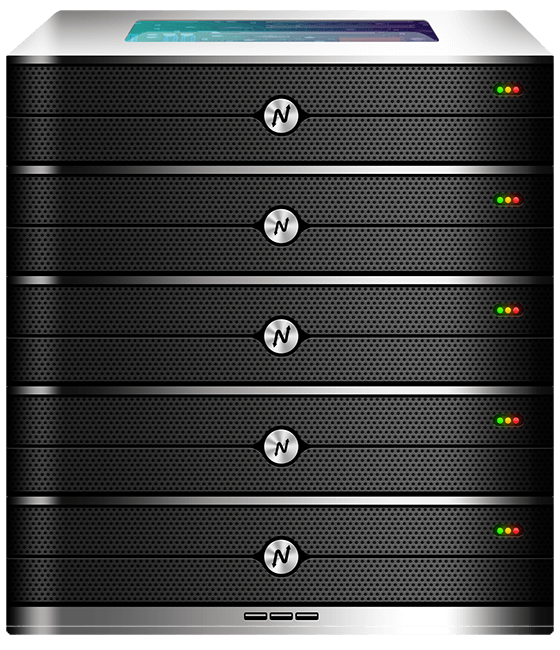Unmanaged VPS hosting puts control in the hands of experienced teams that need performance, flexibility, and predictable costs. In the first 100 words you should know this: unmanaged VPS hosting gives you root access, configurable environments, and lower recurring fees because you manage the OS and stack. For businesses and developers who want precise control over server behaviour, an unmanaged VPS is often the most efficient path.
Choosing an unmanaged VPS from a provider with strong Indian infrastructure like XenaxCloud is a smart global choice. Indian servers combine cost-effectiveness, low latency across Asia, strong reliability and compliance, and the scalability companies need to grow internationally. This guide explains how to pick the right unmanaged VPS hosting plan, secure and optimize it, and scale operations without surprises.

What is Unmanaged VPS Hosting and who should use it?
Unmanaged VPS hosting gives you a virtual private server where the provider handles hardware, network, and hypervisor level maintenance, while you manage the operating system, software, security, and updates. This differs from managed VPS where the host also maintains the OS and some software layers.
Unmanaged VPS hosting is best for experienced sysadmins, agencies, SaaS startups, and in-house devops teams that want complete control. It suits workloads requiring custom stacks, specific kernel tuning, or software not supported by managed environments. Because you handle maintenance, costs are usually lower, and performance tuning is unlimited.
If you plan to run container orchestrations, custom database engines, or compliance-sensitive applications, unmanaged VPS hosting gives the configurability you need.
How to choose the right unmanaged VPS hosting plan
Choosing the right unmanaged VPS hosting plan starts with workload profiling: CPU needs, memory usage, disk I/O, storage type, and bandwidth patterns. Begin by listing the primary services you will run—web servers, databases, background workers, CI runners—and estimate peak concurrency.
For small production services and staging environments, Speed KVM VPS 1 — 2 Vcore CPU, 4GB RAM, 40GB Storage, 2TB Bandwidth, $4.79 — is a popular entry point. For production databases or higher concurrency, KVM VPS 2 — 4 Vcore CPU, 8GB RAM, 50GB Storage, 2TB Bandwidth, $8.39 provides a sensible upgrade path. Agencies and SaaS with steady heavy loads should evaluate KVM VPS 3 or higher in the Speed or Normal KVM lines.
Consider NVMe storage when your application is I/O-sensitive, and look for instant provisioning and snapshot capabilities for fast recovery. For a full list of VPS options and provisioning details, see XenaxCloud’s VPS page.
- 4 GB RAM
- 40 GB SSD Storage
- 2 TB Bandwidth
- 1 IPV4 & IPV6
Speed, uptime, and security advantages of unmanaged VPS hosting
Unmanaged VPS hosting delivers predictable resource allocation. Because your instance has dedicated vCPU and RAM quotas, noisy neighbor issues are reduced. Using NVMe storage in many VPS plans improves read/write speeds dramatically, which reduces page load times and database latency.
Uptime and reliability depend on the provider’s infrastructure and your maintenance discipline. Choose a host that offers redundant network paths, DDoS mitigation, and clear SLA statements. XenaxCloud’s infrastructure includes enterprise networking and monitoring, which minimizes hardware-related interruptions while you manage software uptime.
Security on an unmanaged VPS is a shared responsibility. Apply OS hardening, enable firewalls like UFW or iptables, configure SSH keys, and automate patching where possible. For mission-critical services, combine unmanaged VPS hosting with managed security services or consultative support to meet compliance needs.
Real-world use cases for businesses and developers
Unmanaged VPS hosting fits many production and development scenarios:
SaaS applications — Run custom stacks, background workers, and job queues with full control over runtime versions and tuning parameters.
Agencies & resellers — Host isolated client sites and staging environments, giving each client predictable resources while maintaining separation.
Databases and caching — Deploy dedicated Redis, PostgreSQL, or custom NoSQL engines with tuned kernel parameters and storage layouts.
CI/CD and build runners — Use VPS instances as self-hosted runners in pipelines to control runtime and resource use.
Gaming or realtime apps — Low latency and predictable CPU allocation help applications that need consistent tick rates and small jitter.
Each example benefits from the ability to snapshot, clone, and script deployments, making unmanaged VPS hosting a flexible foundation for growth.
Why Indian servers can handle global traffic efficiently
Indian data centers are increasingly optimized for regional and global delivery. Good peering, multiple transit providers, and regional backbone connections reduce round-trip times across Asia-Pacific. For customers in Australia, Southeast Asia, and the Middle East, well-provisioned Indian servers often deliver lower latency than distant western regions.
Infrastructure maturity is now comparable to other regions: enterprise-grade racks, redundant power, and network equipment. Combined with competitive operational costs, Indian servers provide a strong value proposition for global deployments that need regional performance and transparent pricing.
XenaxCloud’s global connectivity ensures fast provisioning and regional peering, which helps when you deploy unmanaged VPS hosting and need predictable DNS and routing behaviour. Mentioning the XenaxCloud Offers Page once helps businesses find current discounts when evaluating plans. The latest offers and discounts are available at https://xenaxcloud.com/offers.
Scalability options for startups and agencies
Scalability with unmanaged VPS hosting looks different than fully managed cloud autoscaling. You plan vertical upgrades (adding CPU/RAM/disk) or horizontal scaling by adding more instances behind a load balancer.
Startups should design for vertical scale first—choose a VPS plan with headroom and snapshot capability. For example, begin with Speed KVM VPS 1 and upgrade to KVM VPS 3 as concurrency grows. Agencies deploying multi-tenant sites can script instance deployment and use orchestration tools like Docker Compose or Kubernetes on VPS clusters.
For stateful services, use replication and read replicas. For stateless web tiers, automated provisioning and configuration management (Ansible, Terraform) make horizontal scaling predictable. Finally, implement observability and autoscaling triggers where possible; even on unmanaged VPS hosting you can hook monitoring alerts to manual or scripted scaling workflows.
Comparison: Indian servers vs US, Canada, Germany, UAE
Below is an operational comparison that highlights performance and support attributes relevant to unmanaged VPS hosting. This table omits pricing and focuses on delivery metrics.
| Metric | India | US/Canada | Germany | UAE |
|---|---|---|---|---|
| Latency to APAC | Lower — optimized regional peering | Higher for APAC, lower for Americas | Optimized for Europe, moderate for APAC | Good for Middle East and APAC |
| Provisioning Speed | Fast — instant VPS and snapshots | Fast — broad global capacity | Moderate — enterprise focus | Fast — regional hubs available |
| Support & SLA | 24/7 regional support, clear SLAs | 24/7 global support, timezone distribution | Business hours with strong enterprise SLA | 24/7 with localized regional expertise |
| Best for | APAC reach and cost efficiency | Americas and global apps | Europe and GDPR workloads | Middle East and APAC hybrid |
This comparison demonstrates why Indian servers are a pragmatic choice for businesses that need APAC performance and predictable operations when using unmanaged VPS hosting.
Security checklist for unmanaged VPS hosting
Security is a continuous process. For unmanaged VPS hosting, follow a concise checklist:
- Enforce SSH key authentication and disable password logins.
- Configure a host-based firewall and limit open ports.
- Keep the OS and critical packages updated automatically where possible.
- Configure regular backups and test restorations.
- Use fail2ban or comparable tools to block suspicious activity.
- If handling sensitive data, implement disk encryption and audit logging.
These steps are essential because unmanaged VPS hosting puts the responsibility for patching and hardening squarely on your team.
Backup and disaster recovery strategies
For any unmanaged VPS hosting setup, snapshot and backup cadence matters. Use daily or hourly snapshots for critical systems and keep offsite backups for disaster recovery. Test recoveries quarterly. For databases, combine logical backups with physical snapshots to ensure consistency, and consider point-in-time recovery where supported.
Automate backup rotation and retention policies so you do not accumulate unnecessary costs and can quickly restore operations after failure.
FAQ —
Why choose unmanaged VPS over shared hosting?
Unmanaged VPS offers dedicated resources, isolation, and root access for custom stacks and predictable performance.
Is unmanaged VPS hosting cheaper than managed VPS?
Yes, unmanaged VPS hosting typically costs less because the provider does not handle OS updates or application management.
How do I secure an unmanaged VPS?
Secure your VPS by using SSH keys, a firewall, automated patching, strong user controls, and regular backups.
Which XenaxCloud VPS plan suits developers and small teams?
Speed KVM VPS 1 and KVM VPS 2 are excellent starts for developers and small teams needing reliable performance and control.
What is the difference between Indian VPS and foreign VPS?
Indian VPS often offers lower latency across APAC and competitive operational costs, while foreign VPS may have advantages closer to specific regional audiences.
Can Indian servers handle global website traffic?
Yes—when combined with CDNs, global peering, and multi-region architecture, Indian servers can serve global traffic efficiently.
How to choose the right server for my business?
Assess your workload, expected concurrency, storage type, and growth; choose a plan with headroom and easy upgrade paths.
Recommended XenaxCloud plans for unmanaged VPS hosting
Based on common use cases, these plans are recommended:
- Speed KVM VPS 1 — 2 Vcore CPU, 4GB RAM, 40GB Storage, 2TB Bandwidth, $4.79 — ideal for development, staging, and small production apps.
- KVM VPS 2 — 4 Vcore CPU, 8GB RAM, 50GB Storage, 2TB Bandwidth, $8.39 — balanced for production web apps and small databases.
- KVM VPS 3 — 8 Vcore CPU, 16GB RAM, 70GB Storage, 4TB Bandwidth, $14.39 — for agencies and mid-sized SaaS with higher concurrency.
These plans support snapshots, quick provisioning, and the control needed for unmanaged VPS hosting workflows.
Conclusion —
Unmanaged VPS hosting gives professional teams the flexibility, performance, and cost control they need to run complex applications and grow predictably. When paired with a reliable provider that offers strong regional infrastructure and support, you get the best of both worlds: operational control and enterprise-grade uptime.
Choosing Indian hosting with XenaxCloud adds cost-effectiveness, regional low latency across Asia, proven reliability, and scalable options for international businesses. Start with a plan like Speed KVM VPS 1 or KVM VPS 2 based on your workload, and scale up as demand grows. XenaxCloud offers a 15-day money-back guarantee and transparent provisioning so you can test performance risk-free. Check the latest deals on the XenaxCloud Offers Page to find current promotions and savings.
Ready to move to an unmanaged VPS hosting environment that fits your team and budget? Explore XenaxCloud’s VPS options and start your trial today.
Internal link used: https://xenaxcloud.com/vps-server/
- 4 GB RAM
- 40 GB SSD Storage
- 2 TB Bandwidth
- 1 IPV4 & IPV6





